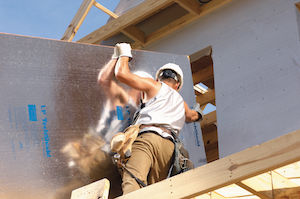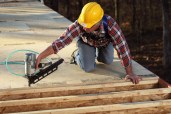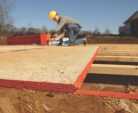In recent years, the International Energy Conservation Code (IECC) has provided both prescriptive paths and performance paths for reaching energy code compliance. The prescriptive paths are strictly dictated and allow less opportunity for flexibility and trade-offs to reduce construction costs. But the performance paths are designed to let builders view the home as a whole system. They empower a builder to make adjustments and product swap-outs as long as the overall energy efficiency of the home meets requirements based on climate zone.
The newest performance path is based on a home’s Energy Rating Index (ERI). The ERI is a number that falls somewhere between 100 (representing a home built to the prescriptive 2006 IECC) and 0, a home that uses Zero Net Energy. The lower the score, the higher the home’s energy efficiency.
Using the ERI performance path, a builder could use slightly less energy-efficient windows as long as improvements are made elsewhere, e.g., with a high-performance attic. That’s exactly what some builders are now doing by installing LP TechShield Radiant Barrier Sheathing above the attic.
According to an APA study, installing radiant barrier sheathing is estimated to lower a home’s ERI rating by up to three points in Climate Zones 2 and 3 (south Texas, Florida, lower Arizona) and by up to two points in Climate Zone 4 (most of California, Alabama, Georgia, etc.). In fact, radiant barrier sheathing reduces a home’s ERI score by almost as much as a complete switch from incandescent to compact fluorescent and LED lighting.
Thanks to educational efforts by the major homebuilders, most buyers today understand the importance and value of lower ERI scores. With the ERI performance path, builders have much more freedom to achieve the increasingly more stringent building codes.
LP and TechShield are registered trademarks of Louisiana-Pacific Corporation.



